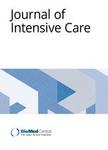版权所有:内蒙古大学图书馆 技术提供:维普资讯• 智图
内蒙古自治区呼和浩特市赛罕区大学西街235号 邮编: 010021

作者机构:Wake Forest Sch Med Dept Biostat Sci Div Publ Hlth Sci Winston Salem NC USA Univ Alberta Dept Crit Care Med 1-40 Zeidler Ledcor Bldg Edmonton AB T6G 2X8 Canada Univ Alberta Div Gastroenterol & Hepatol Edmonton AB Canada Univ Alberta Div Crit Care Med & Infect Dis Edmonton AB Canada Univ Manitoba Sect Crit Care Med Winnipeg MB Canada Univ Manitoba Infect Dis Sect Winnipeg MB Canada Surrey Hosp Surrey BC Canada Rush Med Coll Chicago IL 60612 USA Laurentian Univ Sudbury ON Canada
出 版 物:《JOURNAL OF INTENSIVE CARE》 (J. Intensive Care)
年 卷 期:2018年第6卷第1期
页 面:66页
核心收录:
主 题:Pneumonia Septic shock Classification and regression tree Antimicrobial therapy
摘 要:BackgroundPneumonia complicated by septic shock is associated with significant morbidity and mortality. Classification and regression tree methodology is an intuitive method for predicting clinical outcomes using binary splits. We aimed to improve the prediction of in-hospital mortality in patients with pneumonia and septic shock using decision tree *** and regression tree models were applied to all patients with pneumonia-associated septic shock in the international, multicenter Cooperative Antimicrobial Therapy of Septic Shock database between 1996 and 2015. The association between clinical factors (time to appropriate antimicrobial therapy, severity of illness) and in-hospital mortality was evaluated. Accuracy in predicting clinical outcomes, sensitivity, specificity, and area under receiver operating curve of the final model was evaluated in training (n=2111) and testing datasets (n=2111).ResultsThe study cohort contained 4222 patients, and in-hospital mortality was 51%. The mean time from onset of shock to administration of appropriate antimicrobials was significantly higher for patients who died (17.2h) compared to those who survived (5.0h). In the training dataset (n=2111), a tree model using Acute Physiology and Chronic Health Evaluation II Score, lactate, age, and time to appropriate antimicrobial therapy yielded accuracy of 73% and area under the receiver operating curve 0.75. The testing dataset (n=2111) had accuracy of 69% and area under the receiver operating curve *** mortality (51%) in patients with pneumonia complicated by septic shock is high. Increased time to administration of antimicrobial therapy, Acute Physiology and Chronic Health Evaluation II Score, serum lactate, and age were associated with increased in-hospital mortality. Classification and regression tree methodology offers a simple prognostic model with good performance in predicting in-hospital mortality.